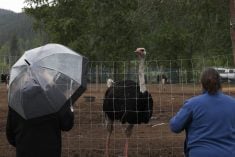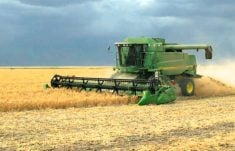SOUTHWEST
Warm and humid weather conditions were the norm.
The majority of crops are rated in good condition. They continue to rapidly develop with excellent growing conditions.
Insect pressure is generally below economic threshold levels.
Hay yields are average to below average. Pastures have been affected by heat, lack of rain and overgrazing.
NORTHWEST
Warm weather has rapidly advanced all crops, which overall are in good to fair condition.
There has been some spraying for fusarium head blight and sclerotinia.
Read Also

Arlene Dickinson says recent trip to Asia opened her eyes to new trade opportunities
Arlene Dickinson says Canada must take up decades-old suggestions to support the agriculture and food sectors
CENTRAL
Adequate moisture in conjunction with warm, humid weather has allowed most crops rapid growth. Overall, most fields look good.
Fungicide applications continue for cereal crops.
Diamondback moth and bertha armyworm trap counts are average to low but slowly increasing. Other insect population numbers remain average.
Precipitation has delayed haying operations with yields average to below average. Alfalfa weevil damage is visible in some fields.
EASTERN
Localized precipitation accumulations were 10 to 100 millimeters.
Standing water and drowned crops were noted in some areas.
Good growing conditions prevailed and crops generally look good.
Post-emergent herbicide applications are almost complete as well as applications for fusarium head blight and sclerotinia.
There have been limited insecticide applications.
INTERLAKE
Hot, humid temperatures and lack of precipitation helped dry up low areas in fields with standing water.
Fungicide application on spring cereals is ongoing, and oats are being sprayed at the flag leaf stage on later seeded fields.
Heat is shortening canola’s flowering period.
Alfalfa seed fields continue to bloom as leaf cutter bees pollinate.
Hay field conditions vary considerably from very wet to dry.














